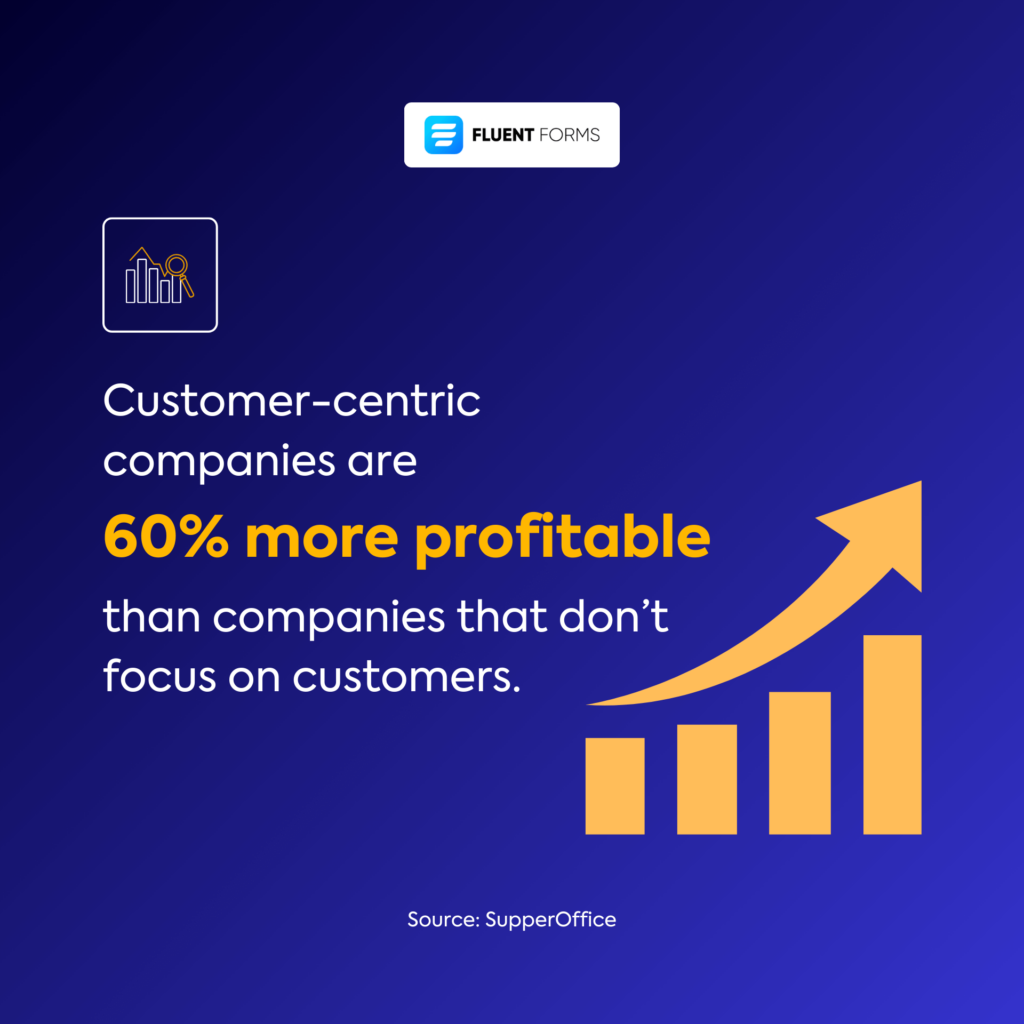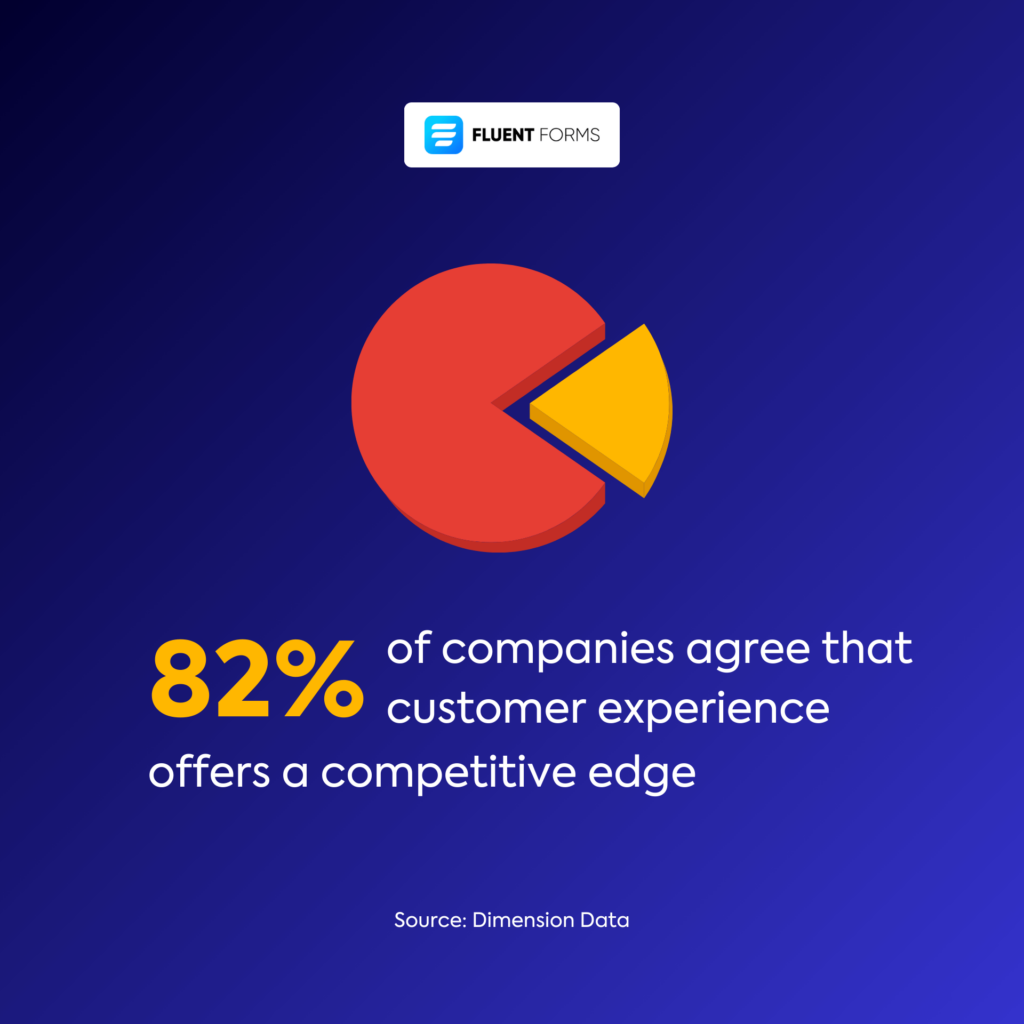8 Tips to Create a Customer-centric Culture For Small Businesses

Customers are an essential part of a business. But should you keep them only as a part or keep them in the center of attention, that’s the question. Establishing a customer-centric culture for your business can help you stand out and give you a competitive advantage.
The market today is highly competitive. It’s not easy for small businesses to acquire new customers. To stay in the competition, being customer-centric is a great way to attract new customers and build brand visibility. You can take advantage of direct interactions with your customers, providing personalizations, and building stronger connections.
This guide covers the steps, examples, and cautions to help you create a customer-centric culture in your business. Let’s start with the definition.
What does being customer-centric mean?
Being customer-centric means, that when you’re selling veggies to vegans you center your business around them. In the process, you’re preaching or holding their value. You’re also aligning your company’s motive with their motive. It means, even in the worst-case scenario, you’re ready to sell meat if all your existing customers become carnivores.
Though things aren’t that extreme in most cases. Simply put, a customer-centric approach means you’re focusing your whole business around your customers. You and your team are doing these things when you’re customer-centric:
- Finding your most valuable customers
- Focusing your business toward customers’ perspective
- Building a relationship to understand customer’s needs
Now let’s move on to find out if customer-centricity helps or not.
How does being customer-centric help small businesses?
Small businesses might face many challenges in the fierce competition. That’s why they need to make decisions wisely. They can’t afford to waste their funds on some unworthy experiments. We suggest to every small business to become customer-centric. But why? Because it’s safe.

You’re a business owner and you can set new trends. Historically, the trendsetters weren’t customer-centric, rather they compelled the customers to buy. This approach comes with a great risk. Either you succeed and become the winner, or you lose badly.
The market is competitive and not everyone can set trends. As a small business, resources and manpower can be your limitations. Wasting them with this huge risk can derail you from the market. That’s why becoming customer-centric is the safest option you should opt for.
It provides you with fewer risks but more safety. The more you understand your customers and revolve your business around them, the chances of sustainability increase. Some other benefits you get from being customer-centric are
- Find new opportunities to grow: While finding your customers’ needs, you gain new insights that let you grow.
- Long-term customer loyalty: Customer loyalty is a thing that every company thrives on. You get it when you focus on your customers.
- Competitive edge: As you are small and have a small number of customers, you have the scope to tailor unique personalizations. This is one thing that large companies struggle to achieve. Thus you get an edge over them.
8 Tips to create a customer-centric culture
It sounds tough to center your business around customers. Understanding the customers and satisfying them might be challenging. But with genuine efforts and a proper strategy can make the process easy. Here are 8 tips for you to build a customer-centric culture in your small business.
1. Understand the buyer’s persona
If you’re asked about your buyers, do you know who they are? Why do they buy from you? What do they want? When you can answer these questions, that’s your first step to customer-centricity. Without understanding the buyer persona you can’t reach the target audience. You might miss potential buyers because of this. That’s why, proper knowledge of different buyer’s persona of your customers is required.
To gain knowledge about different buyer personas, communication is the key. Communicate to your customers through different communication channels. Ask them why they buy from you. Being a small business, leverage your advantage of personal interaction. This way you can understand their journey of being a buyer and also their persona.
2. Stay engaged with your customers
Engagements with customers play a vital role in the competition. It’s also a tool to become customer-centric. Social media is a platform for this kind of engagement. Your customers might post about your service/product or wanna learn more about you. Getting connected to them in their preferred media helps you build better connections.
Try to be present in every social media where your customers are. Make it easy to reach you. Ask their reasons for any good or bad reviews if possible. You can build community or groups. Where customers can engage with each other and with you also.
3. Include your customers in decision-making
You might be the owner but when you’re trying to become a customer-centric business, this step is mandatory. Unless you include your customers in any form of decision-making, they don’t feel valued. This way you can get a loyal and impactful customer base in the long run.
Whatever your products/services are, customers always have some opinions about them. Sometimes they have complaints also. Listen to everything they have to say. It helps you find new insights. Also, you can ask for opinions on upcoming features or changes to your products/services. This process makes your customers feel heard and valued.
4. Keep your employees happy
Whatever your business is, keeping employees happy is a must. Without happy employees, you never get proper output. Also, happy employees bring happy customers. A happy customer service team never lashes out at an angry customer. That’s why it’s always a priority.
Be transparent with your employees about the pay, and the facilities they’ll get from you. Let them have breaks and proper rest. Create a friendly work environment.
5. Provide a seamless customer experience
Customer experience is crucial for a customer-centric business. You need to design the experience the way your customers might want. A good customer experience creates a better brand image. It ensures you stand out in the crowd.

Providing a seamless customer experience doesn’t require a heavy budget. Just keep it simple, easy, and comfortable.
6. Train your team
A professional team that’s capable of doing anything on demand might be your dream. But to make it true, you can do it by giving your existing team proper training. A well-trained team is your asset. You can’t be everywhere singlehandedly to do everything. Your team should be the one you can trust. That’s why invest in training them.
You can use online resources to train them easily. Expert guidance is also available online nowadays. Even you can hire some experts to train them if it fits your budget.
7. Do the research, always
Don’t depend on lucky guesses. Making assumptions about your customers, and about the market won’t help you sustain. One or two guesses might turn out to be true. But when most assumptions get wrong, it can hurt your business badly.
Always depend on research and analytics. Don’t try to lower your budget by cutting the research cost. Because in the end, you’ll gain nothing by just assuming. Good research about your customers and market can present you with remarkable insights. Thus you can act following the data and its perception.
8. Follow up with feedback
Creating a customer feedback loop is necessary. In this way, you can check if the actions you’ve taken are working or not. You can also get their suggestions and opinions about your product.
You can run surveys regarding how much they liked the changes you’ve made. Create proper feedback questions that help you understand customers’ perceptions. Follow up on the improvements you’ve worked on. Be proactive to ask them before they face any issues. Keep the feedback loop ongoing.
Customer-centric businesses you should follow
Many successful businesses that you know of, have achieved this by being customer-centric. They have found their way of doing things and set themselves apart from the crowd. Take the learnings from what they’ve done and do it your way. Here are a few examples of successful customer-centric businesses:
1. Apple
The reason people are fans of Apple is not only their product but also the seamless customer experience. Apple always finds ways to give customers a smooth journey. In every touchpoint, they make the customer-centric approach and keep it consistent. The harmony between product, service, and retail experience has been the key to consistency.
Whichever niche you belong to, keep your team consistent on every customer-centric approach you make. Being able to continuously provide a seamless experience should be your focus.
2. Amazon
You already know why Amazon is on the list. Not gonna exaggerate but they’re the epitome of customer-centricity. It keeps pace with the new technologies and embraces them where possible. With new technologies, they provide meaningful customer experience. Innovation is the key to offering massive personalizations to their customers.
Invest in new technologies where needed. Put customer experience at the top of your priority list like Amazon. This can help you create a brand image and a loyal customer base.
3. Netflix
Netflix has exceeded the expectations of personalization. It doesn’t only limit itself as a streaming service but has become a trustful companion. As a good friend, it presents wonderful recommendations according to the users.
Give efforts to understanding the users. Being proactive always gives you an edge. Wonderful recommendations of your product, exceeding customers’ expectations can do wonders.
Things to watch out for
It’s good to be customer-centric but being overly obsessed with customers can hurt you. A business doesn’t run on obsessions. Be careful of your plans and executions. Check if they are necessary or not. The things that you should keep in check while becoming customer-centric:
1. Aggresively spending
Small businesses mostly have tight budgets. In terms of focusing on customer needs, spending aggressively might backfire. Personalizations might cost a lot more than the profits in many cases.
In the process of being customer-centric, don’t try to exceed or spend heavily on one or two things. Distribute your budget wisely. Keep a balance on your expenses.
2. Getting biased
Don’t stay biased toward your customers. You might get complaints about the service or your team. Taking action on the customers’ perception isn’t rational.
Be ready to hear from both sides and proceed accordingly. Biased actions can hurt you in the long run.
3. Overdoing
Don’t overdo any effort. It’s not only you who’ll be giving their effort. You and your team would have to go through a lot when you’re overdoing things. Putting extra shifts, and extra workload just to meet customers’ needs isn’t always a healthy practice. It might preach the wrong message that you don’t care about your employees.
Keep the work environment friendly and healthy. Don’t put immense pressure just because some customers need it. You need to sustain, not to survive just for a few months.
Wrap up
Fostering a customer-centric culture keeps your business on the right track. You get repeat businesses, better insights, and a competitive edge.
Obsession with customers’ needs isn’t recommended. Do what you can but know the limits. Think about your team as well to get better output in the long run. Don’t rush!
If this writing helps you share it with others. Let us know if you’re business is customer-centric or not, in the comments below.







Leave a Reply